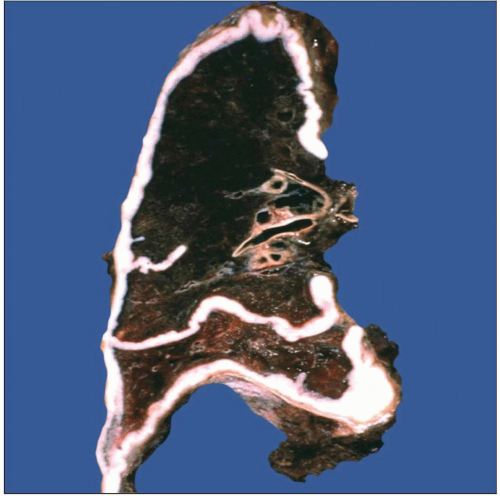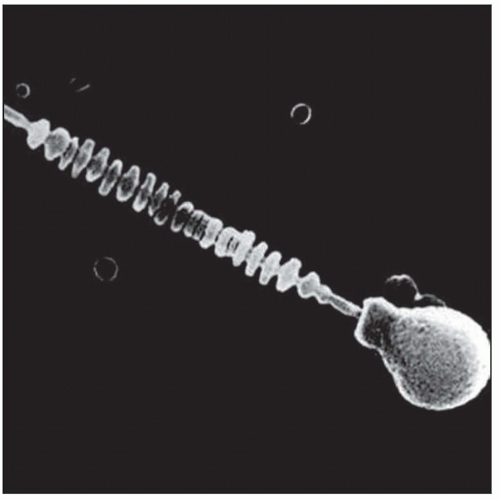Overview of Malignant Pleural Neoplasms
TERMINOLOGY
Definitions
Malignant pleural neoplasms may be primary or secondary
Primary malignant pleural neoplasms
Malignant mesothelioma (most common primary malignant pleural neoplasm)
Malignant lymphoma of pleura (primary effusion lymphoma and pyothorax-associated lymphoma)
Primary mesenchymal tumors of pleura
Secondary pleural neoplasms
Metastases to pleura are most common type of malignancy involving pleura
Metastases from lung carcinoma are most common type of secondary tumor of pleura
Other common types of pleural metastases include breast, kidney, gastrointestinal, and female genital tract cancer
ETIOLOGY/PATHOGENESIS
Etiology
Occupational exposure to asbestos has been established as most important cause for development of malignant mesothelioma
Asbestos-related mesotheliomas are associated with long latency period (30-40 years)
Asbestos fiber types are associated with varying degrees of carcinogenicity
Amphiboles (amosite and crocidolite) are most potent ones; crocidolite is more dangerous of the 2
Chrysotile is the least potent carcinogen among asbestos fibers and associated with the lowest risk
Syrian monkey virus (SV40) has been associated with development of mesothelioma in exposed individuals
SV40 induces breaks in human DNA strands in human mesothelial cells inactivating tumor suppressor TP53 and RB genes
SV40 was found in contaminated polio vaccines during the 1950s and 1960s, spreading to millions of people
Role of latent infection with SV40 for causing malignant mesothelioma still remains to be established
Other causes of mesothelioma include the non-asbestos fiber, erionite (found only in Cappadocia, Turkey), and ionizing radiation





